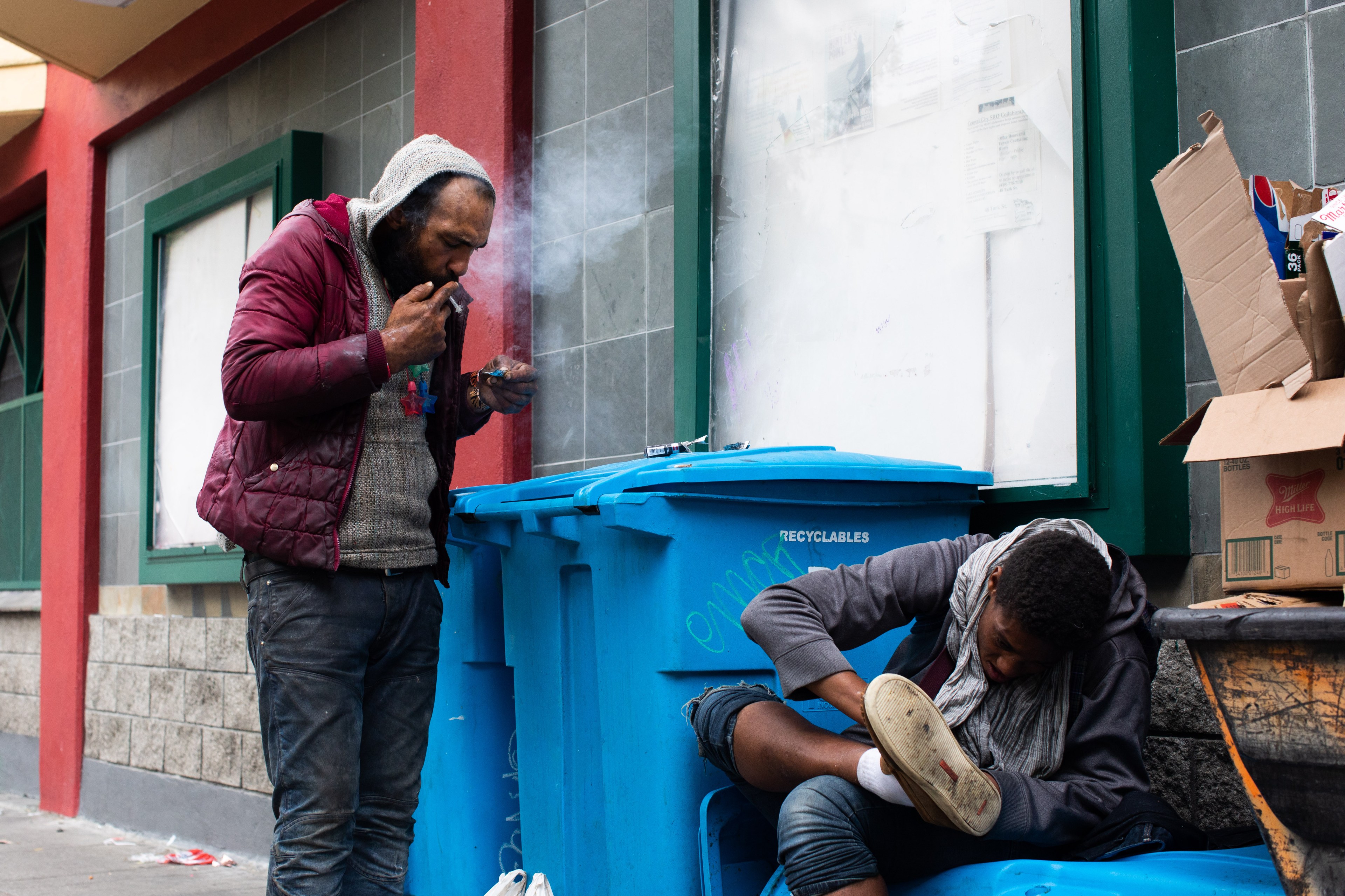A man named Burnell Blindman sat on the curb just across the street from San Francisco’s publicly funded, walk-in addiction treatment referral center on Tuesday. Among the belongings sprawled on the sidewalk beside him were a small dose of fentanyl and a straw to smoke it through.
Blindman said he’s used drugs and alcohol since he was a teenager growing up in San Leandro—but today, he thought, could be the day that he takes the first step toward recovery.
When The Standard informed Blindman that referrals for drug and alcohol treatment were reportedly available across the street from where he was sitting, the man promptly packed up all of his belongings.
“Let’s see,” he said.
Blindman said he previously tried to access drug and alcohol treatment by calling various social service providers, but he was always told to call back the next day or that he didn’t have proper documentation.
However, the city’s Department of Public Health recently launched a public awareness campaign to inform people suffering from addiction that they can access treatment by visiting a triage center at 1380 Howard St., across the street from where Blindman was sitting. The department is expanding hours at the center as the city’s overdose crisis continues at a record pace.
Blindman threw his backpack around his shoulder and walked across the street toward the gated entrance of the four-story building, stopping briefly just outside the door to consider his decision before going inside.
A security guard sitting by the front door beckoned him inwards. Nobody was in line and another man who was exiting the building stopped to encourage Blindman to approach the front desk and begin the intake process.
But at that moment, Blindman froze, turned around and walked down the street and into a liquor store to buy a beer.
Today wasn’t the day, he said.
‘Why Am I Going to Get Clean?’
As the city attempts to make treatment more accessible for people suffering from drug and alcohol addiction, stories such as Blindman’s are not unusual among those seeking help. Other people suffering from addiction on the city’s streets told The Standard they don’t believe they are ready to begin treatment, or their past experiences have dissuaded them from seeking help.
“Why am I going to get clean when I’m homeless,” said a woman named Maycie Stamps. “Drugs are helping me not to go crazy.”
Several people said they believed they needed to acquire housing before they could successfully complete treatment. Others said they previously attempted to enter a program but faltered during the intake process, falling back into their addiction and leaving them wary of further attempts.
In Stamps’ case, she said her insurance coverage is still registered in her hometown in Contra Costa County, therefore making her ineligible for rehab in San Francisco.
A change in the state’s insurance policies has made many prospective clients ineligible for rehab, the health department previously said, playing a role in a recent decline in treatment admissions in the city. Admissions to these programs have declined by 37% between 2015 and 2021, according to a report from the department.
In a statement, the health department said it opened 70 residential treatment beds in the past year, expanded access to rheab through mobile outreach teams and is working to reduce barriers people experience upon entry among other efforts.
“It’s a Lot About Getting There”
Other people using drugs on the city’s streets said drug treatment in San Francisco is often filled with other people using drugs, therefore making it difficult to recover. Some said finding transportation to the facilities can also stand as an obstacle.
Stamps said she believed the city should conduct more outreach operations with the goal of transporting people directly from the streets into a rehabilitation program.
“It’s a lot about getting there,” Stamps said. “If I take the bus, I may end up seeing someone I know and end up fucking around.”
The city’s health department recently changed its messaging around drug use, encouraging people with addiction to seek recovery. A receptionist at 1380 Howard St. told The Standard that clients usually wait between 20 and 30 minutes before they are seen by a counselor. She said it’s best for people to come into the center between 9 a.m. and noon and the beginning of the month is often less crowded.
An annual report that measures wait times in San Francisco’s drug treatment facilities found that the average client waits less than one day to enter withdrawal management programs, the first step for many people seeking recovery. However, some people contend the department isn’t accurately calculating the demand for treatment since many people may leave before they complete the intake process.
In Blindman’s case, at around 10:45 a.m. on Tuesday, it seemed there was little standing in the way of him starting the process for drug treatment. But he was unable to fully articulate why he didn’t follow through.
As he walked away from the center, ultimately unable to buy a beer at the liquor store because they didn’t accept EBT, he recounted the times he unsuccessfully tried to enter treatment.
He said he initially came to San Francisco for a two-week stay in 2021, but he has perpetually delayed his plans to return to family in South Dakota as he reckons with his addiction.
As he walked away from SoMa and into the Mission District, he spotted a bottle of tequila somebody had tossed to the curb. He inspected the bottle, found it was empty and left it back on the sidewalk.
“I just drink too much,” he said as he rounded a corner towards Market Street. “Maybe I should go back to the program.”
